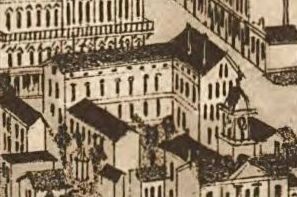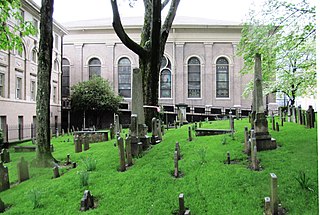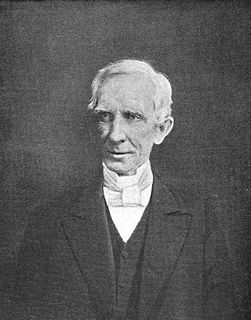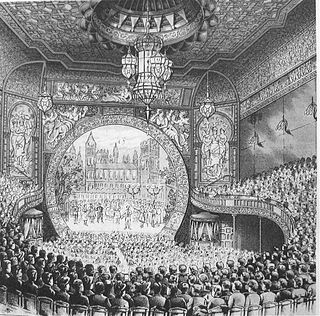Coordinates: 35°57′44″N83°55′0″W / 35.96222°N 83.91667°W

A geographic coordinate system is a coordinate system that enables every location on Earth to be specified by a set of numbers, letters or symbols. The coordinates are often chosen such that one of the numbers represents a vertical position and two or three of the numbers represent a horizontal position; alternatively, a geographic position may be expressed in a combined three-dimensional Cartesian vector. A common choice of coordinates is latitude, longitude and elevation. To specify a location on a plane requires a map projection.
Contents
- Design
- History
- Early history
- Lamar House and the Civil War
- Gilded Age and decline
- Bijou Theatre
- Restoration
- References
- External links
 Exterior view of the theatre (c.2010) | |
| Former names | Wells Auditorium (planning/construction) Wells Bijou Theatre (1909-35) Bijou Art Theatre (1935-75) |
|---|---|
| Address | 803 S Gay St Knoxville, TN 37902-1711 |
| Location | Downtown Knoxville |
| Owner | Bijou Theatre Foundation |
| Operator | AC Entertainment |
| Capacity | 757 |
| Construction | |
| Broke ground | May 1908 |
| Opened | March 8, 1909 |
| Closed | 1975-2005 |
| Construction cost | $150,000 ($4.09 million in 2017 dollars [1] ) |
| Architect | Oakley of Montgomery |
| General contractor | Thomas and Turner, Inc. |
| Website | |
| Venue Website | |
Lamar House Hotel-Bijou Theatre | |
| Built | 1817, 1909 |
| Architectural style | Federal; Georgian |
| NRHP reference # | 75001763 |
| Added to NRHP | December 4, 1975 |
The Bijou Theatre is a theater located in Knoxville, Tennessee, United States. Built in 1909 as an addition to the Lamar House Hotel, the theater has at various times served as performance venue for traditional theatre, vaudeville, a second-run moviehouse, a commencement stage for the city's African-American high school, and a pornographic movie theater. The Lamar House Hotel, in which the theater was constructed, was originally built in 1817, and modified in the 1850s. The building and theater were added to the National Register of Historic Places in 1975. [2]

Knoxville is a city in the U.S. state of Tennessee, and the county seat of Knox County. The city had an estimated population of 186,239 in 2016 and a population of 178,874 as of the 2010 census, making it the state's third largest city in the state after Nashville and Memphis. Knoxville is the principal city of the Knoxville Metropolitan Statistical Area, which, in 2016, was 868,546, up 0.9 percent, or 7,377 people, from to 2015. The KMSA is, in turn, the central component of the Knoxville-Sevierville-La Follette Combined Statistical Area, which, in 2013, had a population of 1,096,961.
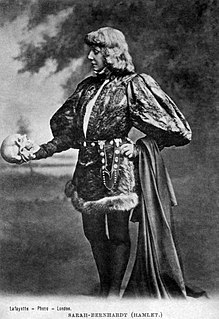
Theatre or theater is a collaborative form of fine art that uses live performers, typically actors or actresses, to present the experience of a real or imagined event before a live audience in a specific place, often a stage. The performers may communicate this experience to the audience through combinations of gesture, speech, song, music, and dance. Elements of art, such as painted scenery and stagecraft such as lighting are used to enhance the physicality, presence and immediacy of the experience. The specific place of the performance is also named by the word "theatre" as derived from the Ancient Greek θέατρον, itself from θεάομαι.

Vaudeville is a theatrical genre of variety entertainment born in France at the end of the 18th century. A vaudeville is a comedy without psychological or moral intentions, based on a comical situation. It was originally a kind of dramatic composition or light poetry, usually a comedy, interspersed with songs or ballets. It became popular in the United States and Canada from the early 1880s until the early 1930s, but the idea of vaudeville's theatre changed radically from its French antecedent.
The Lamar House Hotel was built by Irish immigrant Thomas Humes (1767–1816) and his descendants, and quickly developed into a gathering place for Knoxville's wealthy. In 1819, Andrew Jackson became the first of five presidents to lodge at the hotel, and in the early 1850s, local businessmen purchased and expanded the building into a lavish 75-room complex. [2] During the Civil War, the Union Army used the hotel as a hospital for its war wounded, among them General William P. Sanders, who died at the hotel in 1863. Following the war, the hotel became the center of Knoxville's Gilded Age extravagance, hosting lavish masquerade balls for the city's elite. [2] [3]

The Irish are a Celtic nation and ethnic group native to the island of Ireland, who share a common Irish ancestry, identity and culture. Ireland has been inhabited for about 12,500 years according to archaeological studies. For most of Ireland's recorded history, the Irish have been primarily a Gaelic people. Anglo-Normans conquered parts of Ireland in the 12th century, while England's 16th/17th-century (re)conquest and colonisation of Ireland brought a large number of English and Lowland Scots people to parts of the island, especially the north. Today, Ireland is made up of the Republic of Ireland and the smaller Northern Ireland. The people of Northern Ireland hold various national identities including British, Irish, Northern Irish or some combination thereof.

Andrew Jackson was an American soldier and statesman who served as the seventh president of the United States from 1829 to 1837. Before being elected to the presidency, Jackson gained fame as a general in the United States Army and served in both houses of Congress. As president, Jackson sought to advance the rights of the "common man" against a "corrupt aristocracy" and to preserve the Union.

The American Civil War was a war fought in the United States from 1861 to 1865, between the North and the South. The Civil War is the most studied and written about episode in U.S. history. Primarily as a result of the long-standing controversy over the enslavement of black people, war broke out in April 1861 when secessionist forces attacked Fort Sumter in South Carolina shortly after Abraham Lincoln had been inaugurated as the President of the United States. The loyalists of the Union in the North proclaimed support for the Constitution. They faced secessionists of the Confederate States in the South, who advocated for states' rights to uphold slavery.
In 1909, the rear wing of the building was replaced by the Bijou Theatre structure, entered through a new lobby cut through the hotel building from Gay Street. The theater opened on March 8, 1909, and over the next four decades would host performers such as the Marx Brothers, Dizzy Gillespie, John Philip Sousa, the Ballets Russes, Ethel Barrymore, Alfred Lunt and Lynn Fontanne, John Cullum, and Houdini. After a period of decline in the 1960s and early 1970s, local preservationists purchased the building and renovated the theater. [2]

Gay Street is a street in Knoxville, Tennessee, United States, that traverses the heart of the city's downtown area. Since its development in the 1790s, Gay Street has served as the city's principal financial and commercial thoroughfare, and has played a primary role in the city's historical and cultural development. The street contains Knoxville's largest office buildings and oldest commercial structures. Several buildings on Gay Street have been listed on the National Register of Historic Places.

The Marx Brothers were an American family comedy act that was successful in vaudeville, on Broadway, and in motion pictures from 1905 to 1949. Five of the Marx Brothers' thirteen feature films were selected by the American Film Institute (AFI) as among the top 100 comedy films, with two of them in the top twelve. They are widely considered by critics, scholars, and fans to be among the greatest and most influential comedians of the 20th century. The brothers were included in AFI's 100 Years... 100 Stars list of the 25 greatest male stars of Classic Hollywood cinema, the only performers to be inducted collectively.

John Birks "Dizzy" Gillespie was an American jazz trumpeter, bandleader, composer, and singer.



